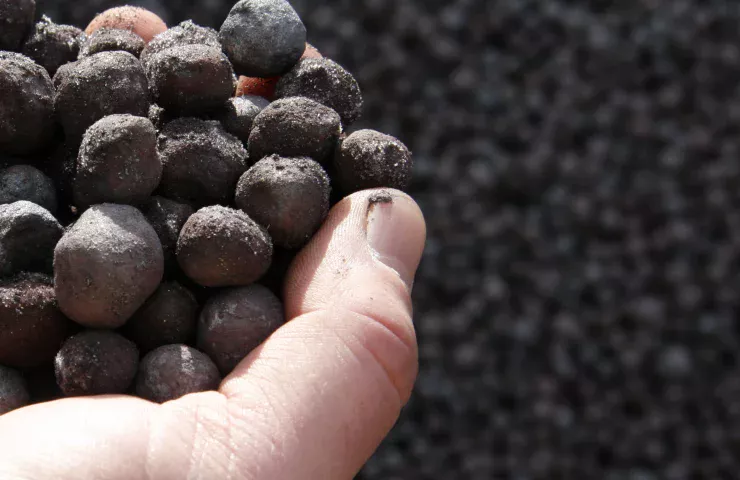The shortage of high-quality iron ore in the market is a major hurdle for steelmakers trying to cut their carbon footprint.
Green hydrogen technologies use less carbon to produce steel, but the process requires higher quality iron ore than traditional blast furnaces. And a shortage of ore with iron grades above 65%, combined with a shortage of mining projects in development, could undermine the steel industry's climate targets, according to a new report from the Institute for Energy Economics and Financial Analysis, or IEEFA.
Steel accounts for 7% of CO2 emissions from the energy sector, according to a 2020 report by the International Energy Agency. There is a growing demand for more environmentally friendly steel plants, and automakers are leading among them.
One of the cleaner methods of steel production uses direct reduced iron, or DRI, in which the ore is reduced with hydrogen and carbon monoxide. If global steel production moves towards zero emissions by 2050, demand for direct reduced or DR grade iron ore could increase tenfold, according to IEEFA Energy Finance analyst Simon Nicholas.
“DR iron ore currently accounts for less than 5% of global iron ore supply,” said Nicholas, author of a report by IEEFA, a financial think tank that supports the transition to cleaner energy. “Given the long lead times for iron ore projects, scaling up DR ore supply to meet any significant increase in demand may prove difficult.”
Iron deficiency
The International Iron and Metals Association concluded in a May 2022 report that there will be a significant shortage of commercially available DR grade iron ore pellets by the early 2030s.
“From a quantitative standpoint, iron ore supplies should not be a problem,” the trade association said in a report. “However, from a qualitative point of view, there is a potentially serious problem.”
Based on a review of forecasts, the potential for new DR pig iron production capacity by 2030 ranges from 40 million tons per year to an "optimistic maximum" of 100 million tons per year, IEEFA analysts write. Data from the European think tank Agora Industry shows that DRI projects will require around 80 million tons of iron ore per year by 2030 if all announced projects go ahead.
In a no-case scenario, demand for DR grade iron ore pellets could more than quintuple over the next three decades, leading to a similar increase in supply, says Isha Chaudhary, director of steel and raw materials research at Wood Mackenzie. Expansion of DR grade iron ore projects will likely require government incentives as well as interest from the mining community, Chaudhary said.
"In our view, most of the supply will come from Brazil, followed by Canada, but there is not enough investment in this direction," Chaudhary said.
Most of the world's higher quality iron ore comes from Brazil. Vale SA, for example, has achieved an iron grade of 65% in its mine operations in the Northern System. However, there are large iron ore projects in other parts of the world, including Rio Tinto's Simandou project and a consortium of Chinese companies that is capable of producing 200 million tons of high-quality iron per year from West Africa.
Although there are exceptions, there are relatively few new iron ore projects.
“For the big four producers, blast furnace iron ore mining is an extremely profitable business, carried out on a large scale at a low cost per ton,” Nicholas said. "It's easy to see why they want to continue this business as usual."
China is slowing steel production, according to S&P Global Commodity Insights principal analyst Ronnie Cecil, which could cause many iron ore producers to hesitate to invest in new mining capacity.
It can also be difficult to find higher quality resources, according to Julia Attwood, head of sustainable materials at Bloomberg New Energy Finance. Many mining companies are likely expecting stronger demand signals from steelmakers that hydrogen is their most likely path forward, but there are also some resource concerns.
Tension in the market could also drive up the markup on DR ores next year, depending on how quickly the mining sector reacts and what steelmakers choose to decarburize.
Many steel companies have rolled out plans to pilot or even larger DRI projects with green




